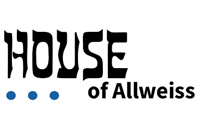I want to thank the many people who have read the first edition of my history of the B5900 and shared their stories of the Burroughs Mainframes or Burroughs Corporation. For 2010 I have reformatted the story to make it easier to navigate, and load faster on small devices. I have incorporated several grammatical and spelling corrections. Some contributed some factual corrections to my story, and I would like to acknowledge them in this preface.
Joao Richter of WWI Investment Corporation in Brazil let me know that he was a user of the B5900 at the Rio de Janeiro Federal University in Brazil and “had a nice time with these systems”. He also pointed out other mainframe architecture that has survived into the 21st century, the BULL DPS series. The product was manufactured by the French computer firm Bull, at one time joint ventured with the US Company Honeywell (during the 70’s to 90’s known as Honeywell Bull computers). The machines run the GCOS operating system. A licensed version of the Bull machines is also manufactured by NEC in Japan. In addition, Fujitsu manufactures mainframe machines. I have rewritten that section of the story.
George Gray, who has coauthored several articles on Sperry/Burroughs/Unisys computers in the IEEE Annals of the History of computing, pointed out that today’s Univac architecture was not the same as the “very first mainframe computer” as I indicated. In his own words: “The architecture which was introduced by the UNIVAC I in 1951 did not live on after the UNIVAC II in 1958. The architecture which is used in today’s Unisys ClearPath Dorado computers originated with the UNIVAC 1107 computer of 1962. The UNIVAC 1107 is a contemporary of the Burroughs B5000, although the 1107 was not nearly as innovative as the B5000. I think the reason it is still alive is that Sperry UNIVAC (like Burroughs) developed a very efficient high-volume transaction processing capability that became entrenched in various big companies and government agencies. Last week, United Airlines made the news because of a computer problem caused by human error on its Unimatic flight scheduling system. Unimatic was implemented in 1968 on a UNIVAC 1108 using FORTRAN V. The same underlying system runs today, of course with modernized interfaces. “. As a side note, about a year after my history George Gray and Ron Smith published an article on the Burroughs mainframes, “Evolution of Burroughs Stack Architecture” which I was happy to provide some input.
In the Gray/Smith article on Burroughs they pointed out that poor customer service played an important role in the dissatisfaction of Burroughs customers in the late 70’s and early 80’s. There was a facet of the B5900 program that addressed this issue that I did not include in my original article. By the late 70’s Burroughs service was behind the times. When I started on the B5900 I knew it would be replacing medium systems, so I wanted to find out what those customers felt about Burroughs equipment. In Santa Ana California there was a regional service office, so I called them and asked to go on some customer calls (they thought it was strange, no one from the plant had asked to do that in years). Customers liked their equipment, but the one complaint I heard over and over, why does it take so long to fix when it is broken? The standard of service at that time was component level repair. If a B2700 or B6700 broke, the tech would come out, run diagnostics, and try to find the component on the circuit board that was faulty and replace it! In some cases, this took hours. Meanwhile, the customer just stood there waiting for their machine to work again.
In the B5900 PDA I proposed board level replacement, our diagnostics would isolate failures to a circuit board (there were only 14 of them in a system), and the tech would come out with that board and replace it. Faulty boards were sent back to the factory to repair. This caused a firestorm in Detroit. It had never been done before! I ended up having to go to Detroit and give a presentation showing that Burroughs would save money doing board replacement, and by the way, the customers would be very happy as repair time would drop to under 30 minutes. It was an uphill battle, and Burroughs CEO Paul Mirabito himself came to the last meeting and approved the plan. In 1981 I went to CUBE, customers were not happy with Burroughs service. One of the first questions I got was about reliability of the B5930. When I explained how the machine was going to feature board replacement, I got a standing ovation.
Peter Fenwick who was working for me in 1979 now resides in New Zealand and reminded me that he worked on a multiplier option card for the B5900; however, that design was not built in Mission Viejo, but may have been the basis of the Brazilian design.
Loren Wilton worked at Pasadena at the same time I was at Mission Viejo and corrected several errors I made in the details about the Pasadena machines. He also had a much more intimate knowledge of the problems they faced using BCML 1. I have incorporated some of his first-hand information.
I want to acknowledge people who read the story and emailed me, including Arnold Spielberg, Terry Powderly, Dennis Welbourn, Mike Stein, Chuck Wakamoto, John McClintock, Len Sager, Ray Buck, Ian Joyner, Bob Olson and Peter Fenwick, Lynn Taylor, Anthony Young. Now please enjoy “the Burroughs B5900 and E-mode, A bridge to 21st Century Computing”.
Jack A. Allweiss
July, 2010 and July, 2018
